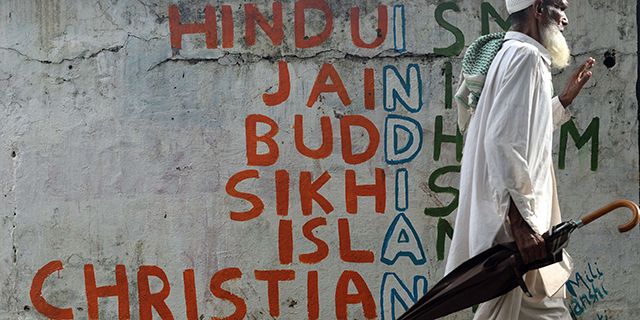5 Facts About Religion In India
Jul 03, 2019 • 6 views

India is home to 1.4 billion people – almost one-sixth of the world’s population – who belong to a variety of ethnicities and religions. While 94% of the world’s Hindus live in India, there also are substantial populations of Muslims, Christians, Sikhs, Buddhists, Jains and adherents of folk religions.
For most Indians, faith is important: In a2015 Pew Research Center survey, eight-in-ten Indians said religion is very important in their lives.
Here are five facts about religion in India:
1 India’s massive population includes not only the vast majority of the world’s Hindus, but also the second-largest group of Muslims within asingle country, behind only Indonesia. By 2050, India’s Muslim population will grow to 311 million, making it thelargest Muslim population in the world, according toPew Research Center projections. Still, Indian Muslims are projected to remain a minority in their country, making up about 18% of the total population at midcentury, while Hindus figure to remain a majority (about 77%).
2 India is a religiously pluralistic and multiethnic democracy – the largest in the world.Itsconstitutionprovides for freedom of conscience and the right to profess, practice and propagate religion. It has protections for minorities against discrimination on the grounds of religion or caste (astrict social stratification based on Hinduism). In 1976, theconstitution was amended, officially making the country a secular state. At the same time, a directive in the constitution prohibits the slaughter of cows – an animal Hindus hold sacred – which each state has the authority to enforce. Currently,21 out of 29 stateshave prison sentences for the act.
3 While there are legal protections for religious groups and minorities, Indians still generally experience “high” levels ofgovernment restrictions on religion. There arelegal restrictions on religious conversionsin at least six states that have at times been used to arrest and intimidate Muslims and Christians who proselytize, according to the U.S. Commission on International Religious Freedom. Additionally,Buddhists, Jains and Sikhsare legally considered Hindus and are unable to access social services or employment and educational preferences available to other religious minority groups. Meanwhile, Christians and Muslims who identify as low-caste Dalits – some of whom aredescendants of Hindu Dalitswho converted to escape caste discrimination – arerestricted from accessing educational and employment benefitstraditionally reserved for Hindu Dalits. Despite these restrictions,India’s Supreme Court has upheld protectionsfor minorities in some religious freedom cases.
4 India also has experienced “very high” levels of religion-related social hostilities in the past decade, according to the samePew Research Center study. In fact, since we began tracking this issue in 2007, the country has consistently scored “very high” on the study’sSocial Hostilities Index. Much of the hostility isdirected against low-caste Dalits, according to the U.S. State Department. Religious minorities, including Buddhists, Christians, Jains, Muslims and Sikhs,also are harassed. In recent years there has been a surge in mob attacks byHindu vigilante groupsagainstDalit and Muslimconsumers and traders in the beef, dairy and leather industries. Additionally, Dalit women aredisproportionately victims of sexual violencedue to their caste, while Muslim women and girls also have beentargeted due to their religion.
5 Communal tensions – between Indians of various religious faiths and castes – havelong plagued Indian society.Most Indians are at least somewhat concerned about these tensions, but even larger shares are worried about other national issues.Almost four-in-ten Indians (37%) said “communal relations” are a very big problem in their country, while an additional 31% named this as a moderately big problem. But greater shares of Indian adults named crime, terrorism, corruption, lack of employment opportunities, rising prices and other issues as major national problems.
